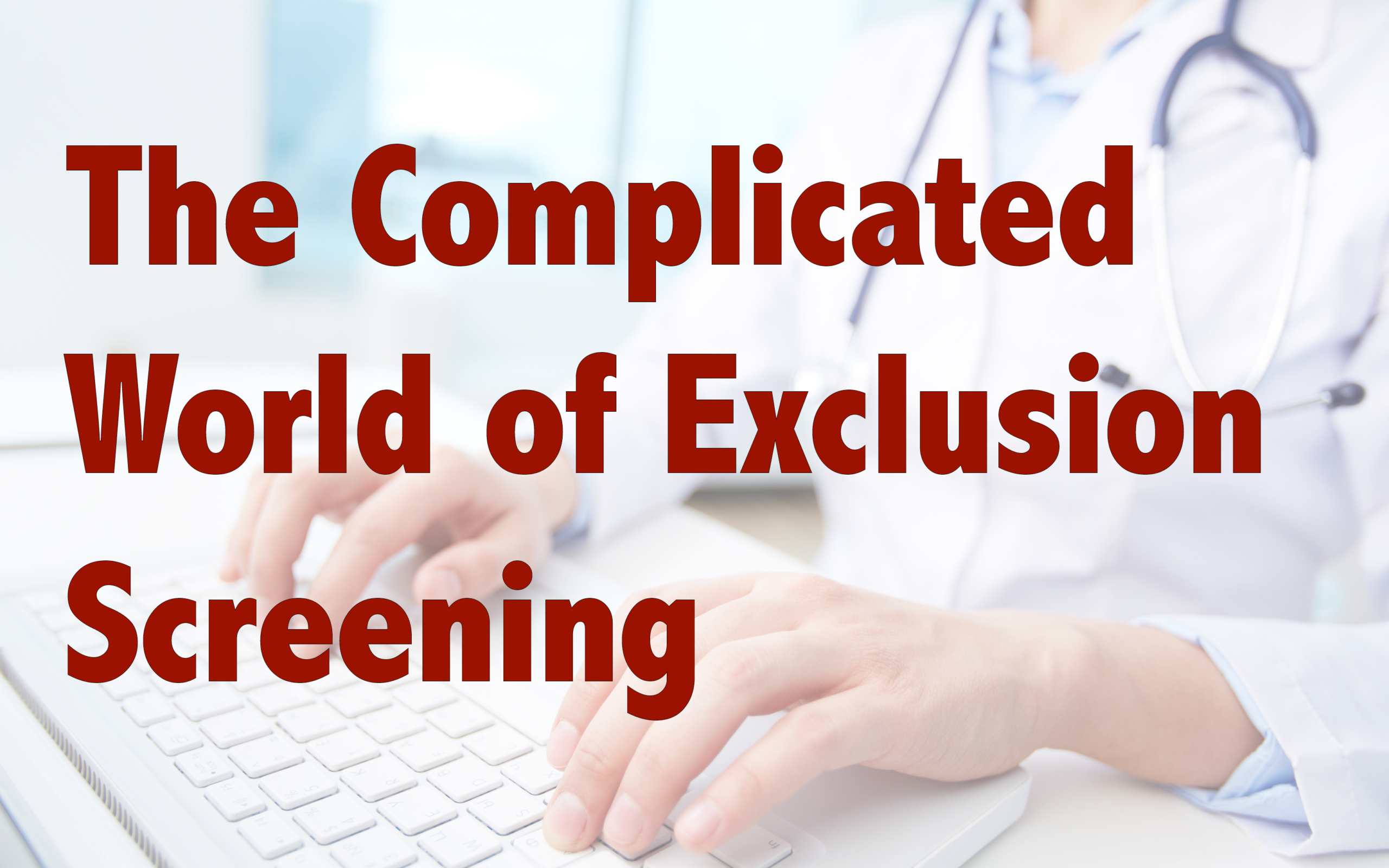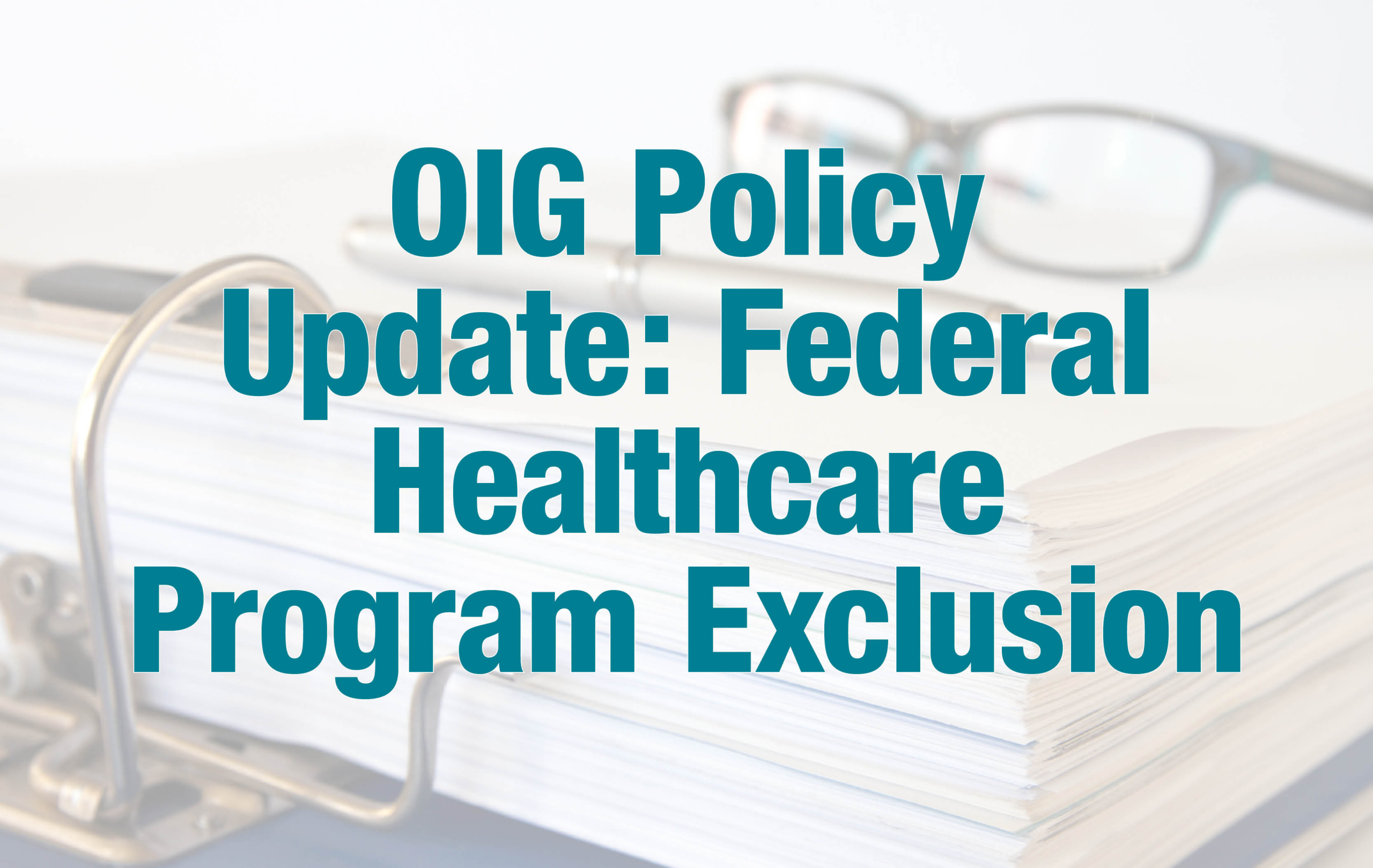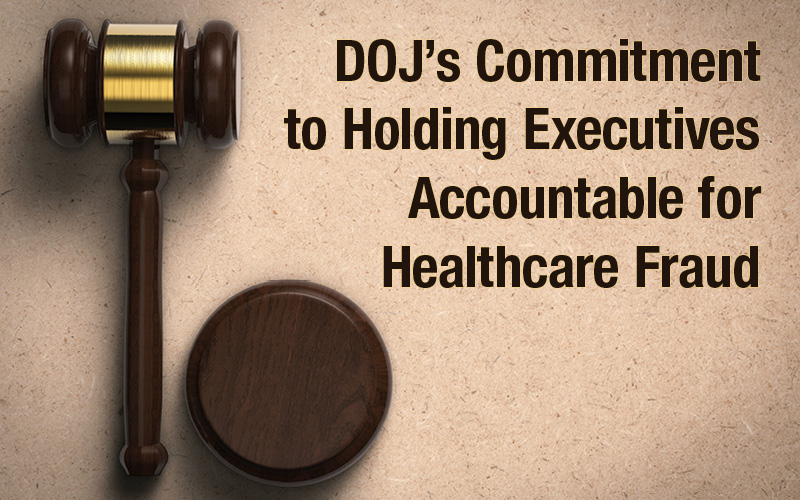The Complicated World of Exclusion Screening
Protecting patients and promoting quality in healthcare are generally accepted goals for providers and employers. However, even with the positive purpose and intent behind exclusion screening, complicated decisions must be made to achieve appropriate allocation of resources. Stakes are high due to the potential impact on patient care, individual employees, and the entire organization, so it is essential to understand the different exclusion lists.
Several entities present the need for screening: General Services Administration’s System for Award Management (GSA SAM), the OIG List of Excluded Individuals and Entities (LEIE), and multiple state specific exclusions lists. Also, a National Provider Data Bank (NPDB) receives and discloses reports on practitioners.
Exclusion screening is an important step since most potential reimbursement for providers hinges on eligibility of their employees to receive payment (even indirectly) from government funds. It’s worth noting that the risk goes beyond participation in Medicare and Medicaid because many health plans require participating employers to certify that none of their employees or other personnel are excluded from participating in any state or federal healthcare program.
General Services Administration’s System for Award Management GSA/SAM
Registration with SAM is necessary to do business with the US government. In July, 2012, GSA migrated its Excluded Parties List System (EPLS) and other systems to the new System for Award Management (SAM). SAM is a comprehensive database that federal agencies can use to determine the eligibility of individuals or entities to participate in their programs.
SAM includes OIG’s exclusions but also includes debarment actions taken by federal agencies. The OIG has no authority to impose civil monetary penalties (CMPs) on the basis of employment of (or contracting with) a debarred person.
It isn’t necessary to set up an account to check the GSA/SAM. However, it does require a few steps to complete the screening. Additional information regarding SAM and debarment is available. Free help with registration is also provided on the site.
The OIG List of Excluded Individuals and Entities (LEIE)
In April 2016, the Office of Inspector General (OIG) updated its policy statement relating to the criteria it considers in determining whether to exclude an individual or entity from participation in federal healthcare programs.
OIG exclusion does not affect a person’s ability to participate in other government procurement or non-procurement transactions. The effect of OIG exclusion is to preclude payment by federal health care programs for items or services furnished, ordered, or prescribed by the excluded party.
Providers should use the LEIE as the primary source of information about OIG exclusions because the LEIE is maintained by OIG. The list is updated monthly and provides details about persons excluded, such as the statutory basis for the exclusion action, the person’s occupation at the time of exclusion, the person’s date of birth, and address information.
State Medicaid Exclusions
Nearly forty states have exclusions lists. Ideally, states would share this information with the OIG and all exclusions would be detected through the LEIE each month. Unfortunately, this is not always the case. A state may automatically exclude an individual excluded by OIG but the opposite isn’t always true.
Many states maintain exclusions lists with screening required as a condition of participating in Medicaid. Other states recommend checking the state list as best practice without making it a requirement. For example, New York states that it is best practice to check their exclusions list every 30 days.
In order to thoroughly screen, an employer would need to check every state exclusion list along with the LEIE on a monthly basis. Realistically, risks and benefits must be weighed by an organization to determine appropriate expenditure of resources.
National Practitioner Data Bank (NPDB)
NPDB provides a national repository of reports to enhance professional review efforts and prevent healthcare fraud and abuse with the ultimate goal of protecting the public. The NPDB receives and discloses reports on health care practitioners, providers, and suppliers, as well as health care organizations. These reports are submitted by authorized organizations as mandated by federal law. These laws determine the types of actions that can or must be reported to the NPDB. A detailed list of reportable actions is available in the NPDB Guidebook.
The importance of NPDB is discussed less often than other screenings. However, most providers agree with Antique Nguyen of Precheck that “patient safety is the backbone of healthcare and the NPDB plays a critical role in protecting patients from unfit, excluded practitioners”. Interested individuals and organizations can learn more through self-query.





